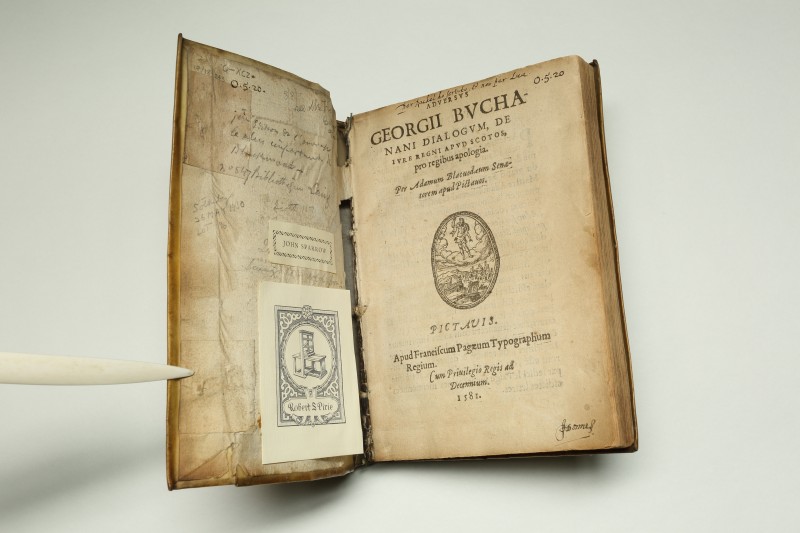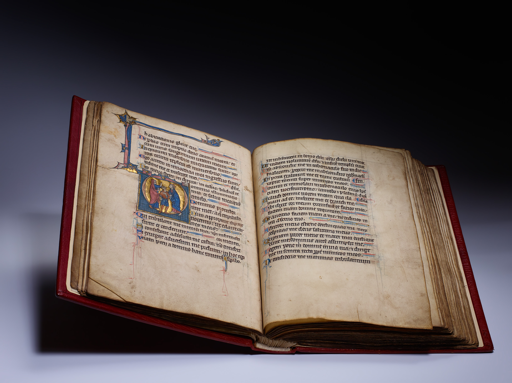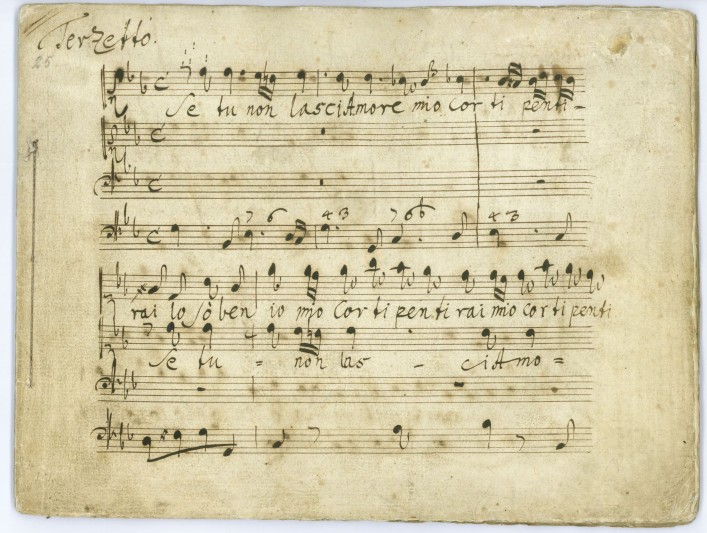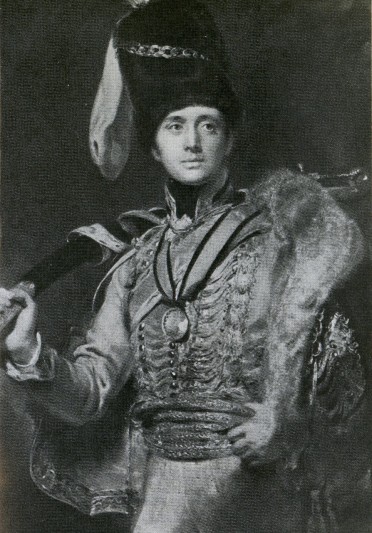This is a collection of pre-eminent importance. Many of the drawings are by Chief Engineer Marc Isambard Brunel himself, by his son Isambard Kingdom Brunel, Resident Engineer, and by Richard Beamish, Assistant Engineer. Some are by Joseph Pinchback, the Tunnel’s chief mechanical draftsman, but all are exquisitely drawn in great detail.
Search FNL grants since 1931
This is one of the last known volumes from the library of John Donne in private hands with the support of the Friends of the National Libraries. It is a copy of Adam Blackwood’s Adversus Georgii Buchanani dialogum, de iure regni apud scotos, printed in Poitiers by François Le Page in 1581. The work was written in defence of Mary Queen of Scots and argued against George Buchanan's De jure regni apud Scotos.
The British Library has been offered the opportunity to purchase the Mostyn Psalter-Hours. The manuscript is a late thirteenth-century Psalter-Hours produced in London in the ambit of Edward I’s court (r. 1272-1307). As a Psalter that can be securely located to London, the national heritage value of the manuscript is high.
The original 16-folio manuscript of Handel’s vocal trio, Se tu non lasci Amore, HWV 201a, scored for two sopranos, bass and continuo, and written in July 1708 shortly after Handel’s arrival in Naples. This manuscript is the only autograph version of this ‘Terzetto’.
Charles William Vane-Stewart, 3rd Marquess of Londonderry, (1778-1854) was a British soldier and politician, and half-brother to Lord Castlereagh. He had a highly distinguished career. Initially commissioned into the British Army as a Lieutenant at the age of 16, he saw service in Flanders in 1794, and was Lieutenant Colonel of the 5th Royal Irish Dragoons during the Irish Rebellion of 1798.
One of the most important documents for the history of Ludlow Castle to emerge in recent times, this heraldic roll appeared in Portobello Road, and, through the good offices of Mr Hugh Wood, a local heraldic expert, was acquired for the Friends of Ludlow Museum. Dating from around 1576, this roll lists and displays the coats of arms of 11owners of Ludlow castle, 9 Lord Presidents of the Council of Wales and the Marches and all 22 members of the Council appointed in 1570. The roll appears to have been produced as a record of coats of arms placed in the chapel in Ludlow Castle in 1574.
The application process to apply for funding from the Friends of National Libraries was very straightforward and the decision made within an exceptionally short timeframe.
This collection of over 500 titles represents an outstanding survey of known and lesser known medical authors, practices and treatments from the late 17th century to the early decades of the 20th century – 300 years when the home was the site of most medical treatments and household members the practitioners. The Geffrye Museum explores the history of home, but the unremitting concern of householders with their health and their voracious collecting of books and manuals with which to doctor themselves and their families at home is a topic that, until now, hasn’t been represented in the museum’s collections.
This outstanding collection adds a great amount of primary evidential material concerning an under-studied and under-represented area of domestic life to the museum’s library; greatly improving its standing as a primary research hub for the history of home, informing our knowledge of home and allowing it to re-interpret its other collections through the lens of health.
This large archive of several hundred letters, notecards, etc., circa 1898-1948, largely comprising large bundles of autograph letters to Sydney Cockerell, or Wilfred Scawen Blunt. Their appeal to the Fitzwilliam Museum was obvious. We house the largest single archive of works by and associated with Wilfrid Scawen Blunt (1840-1922) in the world (including Blunt's original diaries, autograph drafts of his major poems and other published works, and much other completely unpublished manuscript material), and it is one of our most frequently consulted collections. Moreover, Sydney Cockerell (1867-1962) was the longest-serving and arguably most influential Director of the Fitzwilliam Museum (1908-37), as well as secretary, adviser and executor to Wilfred Scawen Blunt. With the generous and remarkably speedy assistance of the Friends of the National Libraries, we were able to bid and acquire the archive.
Written by a single hand in a typically Italian Rotunda script of preternatural regularity, the elegance of which is enhanced by still-wide margins, this late 15th century Book of Hours (Use of Rome) is a handsome and engaging volume. Though robbed of the incipits for Matins and the Hours of the Cross, it preserves large decorated initials plus elaborate border ornament at all the other major textual divisions, plus countless smaller decorated initials throughout. An invaluable addition to our holdings, within three days of arriving in Durham it had already featured in a display class, highlighting its importance here as an excellent example of Italian script, decoration and book production, and as a fascinating complement to our other devotional books and horae, almost all of which are from north of the Alps.





